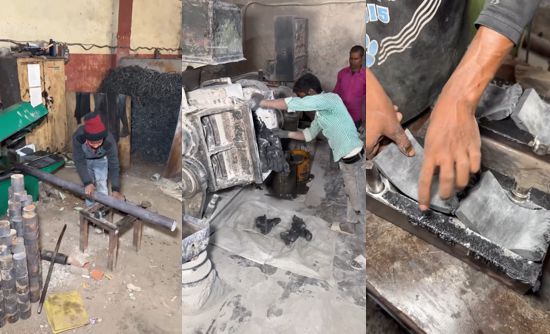Porn Discounts Sex Games Webcam Porno Porn Games Juegos XXX Hentai Games PornStar Games 3D Porn Tantaly Sex Doll Cupsland Sextoy
Live Sex Free Live Sex Free Sex Games Páginas Porno Rose Toy Celebrity Fappening Celebrity Sex Videos TikTok Porn Best OnlyFans
Live Sex Free Live Sex Free Sex Games Páginas Porno Rose Toy Celebrity Fappening Celebrity Sex Videos TikTok Porn Best OnlyFans
Published on 2025/04/16
BUT HEY — AT LEAST WE’VE GOT THIS

We don’t have flying cars. We don’t have hoverboards like in Back to the Future. No colonies on Mars, no robots making us coffee in the morning, no self-drying clothes, no food in pill form, no cure for the common cold, no suits that make us invisible, no Star Wars-style holograms, no teleportation, no virtual vacations like in Total Recall, no time machines, no personal jets to get us to work, no chips that teach us kung fu in 10 seconds or implants that translate languages instantly… But hey — we do have this.
ExtraBall
Cutting the line without anyone saying a word? Totally doable... if you know how to play your cards right.
Her name’s Gia Derza, and you can check out plenty of her scenes right here
|
➡️ Let's do real, be real with Tantaly, the sex doll torso leader |
ExtraBall2
(Clicking on these links daily you support ALRNCN's work. They're collaborators or sponsors and, by visiting their sites, they like us even more)










THE FUTURE OF ROBOTS AND THE EMPLOYMENT DILEMMA
It’s becoming increasingly clear that androids will soon be part of our daily lives, taking on household chores, grocery shopping, and even jobs in factories, logistics, and construction. Automation is advancing with the goal of reducing costs and increasing profits, but this raises a major issue: if robots take over our jobs, where will we get the money to live? If too many people are unemployed, who will buy the products these companies produce?
There are two possible scenarios. One is the creation of a new economic model, where automation forces the implementation of a universal basic income to ensure financial stability for those who can no longer find traditional jobs. This way, consumer spending remains active, and the economy avoids collapse.
The other scenario is a transformation of the job market. Just like the Industrial Revolution eliminated some jobs but created many others, automation could generate new professions we can’t yet imagine. Humans might shift towards creative fields, tech-driven roles, or industries where empathy and human interaction remain irreplaceable.
What’s clear is that if we want a future where robots make life easier without triggering social collapse, we must rethink the economic model. Technology is progressing, but without a strategy for adaptation, the risk of a consumption crisis is real.

# Watch videos
ExtraBall
The slow-motion moment of the day.
ExtraBall2
(Clicking on these links daily you support ALRNCN's work. They're collaborators or sponsors and, by visiting their sites, they like us even more)










HEROES WITHOUT CAPES
Not everyone reacts the same way to danger. Some freeze, others think about their own safety before taking action. But there are those who, without a second thought, throw themselves into danger when someone else is at risk.
The storm had turned the road into a raging river, and a car with a family inside was trapped in the current. The water was rising fast, the pressure against the vehicle increasing, and time was running out.
That’s when he sprang into action—without a thought for his own safety. He could have been swept away, he could have gotten trapped, but none of that crossed his mind. Only the children and their mother mattered. Just seconds after getting the entire family to safety, the car was swallowed by the current and dragged away.

# Watch video
ExtraBall
Britney is still going all out on her IG.
ExtraBall2
(Clicking on these links daily you support ALRNCN's work. They're collaborators or sponsors and, by visiting their sites, they like us even more)


























RECOMMENDED SITES
 Add your site
Add your site
- Motherless
- XRares
- BoobieBlog
- Babes & Bitches
- Erotic Beauties
- celeb-stalker.com
- Candid Teens
- drunkenstepfather
- Kanoni Net
 Add your site
Add your sitePorn Discount
💩 CrazyShit
🤪 eFukt
NudeChatGirls
👉🍑 Top XXX Pictures
Bingo Porno
Best Porn Blog Sites
Sex Games
Real Amateur Porn
MrPornGeek
CamBB.xxx
ChatSex.xxx
Comepollas
PornScn Free Porno
AI Girlfriend App

















THE GENDER PAY GAP EXPLAINED IN A SINGLE VIDEO
david
We’ve all heard about the infamous "gender pay gap": that sinister conspiracy where men supposedly earn more "for doing exactly the same job," because obviously, the evil patriarchy just loves paying women less out of sheer cruelty, keeping them firmly under its thumb—despite the fact that this practice is literally illegal in almost every developed country.
But fine, let’s play along with that idea for a moment: men earn more ON AVERAGE than women, but honestly, have you ever stopped to think why men statistically take home higher salaries? Or do you just buy into it because it’s a mantra repeated endlessly? Maybe—just maybe—it’s because men are out there freezing their asses off on deep-sea fishing boats, getting tossed around by violent storms, handling chains heavier than your car, or sweating away on oil rigs and construction sites, risking their lives every single day. Perhaps it’s related to voluntarily choosing insanely dangerous, physically exhausting, and generally miserable jobs that pay better precisely because no sane person would do them willingly.
So yes, ladies and gentlemen, a pay gap certainly exists. And it seems firmly located in places where most people wouldn't set foot for a million dollars, let alone for 20 or 30 grand a month. But sure, go ahead and keep believing the gap is just the patriarchy flexing its muscles from comfy offices.
And this, dear friends, is the cold, wet, gritty truth behind the famous pay gap.

# Watch video
ExtraBall
Slow motion of the day.
ExtraBall2
(Clicking on these links daily you support ALRNCN's work. They're collaborators or sponsors and, by visiting their sites, they like us even more)











6D KARAOKE ROOMS
An innovative karaoke system in Asia is revolutionizing the experience with 6D technology, where LED projections and sound effects create an immersive environment. Several viral videos show these rooms in action—some, for example, use visuals that trick the brain into believing water is flooding the space, causing dizziness in some viewers. This new trend takes karaoke to another level, blending virtual and augmented reality, proving once again that Asia leads the way in entertainment innovation.

# Watch videos
ExtraBall by walter
Today's slow-motion moment.
ExtraBall2
(Clicking on these links daily you support ALRNCN's work. They're collaborators or sponsors and, by visiting their sites, they like us even more)












Contact
You can tell us whatever you want via email: [email protected]
If you prefer, you can use this contact form:
If you prefer, you can use this contact form:






HOW THEY'RE MADE
You see them every day, silently waiting for you to choose. You approach them, size them up, take a deep breath, and pick the ones that motivate you the most—and from that moment, there’s no turning back. They’re part of your daily routine, helping you grow stronger and push your limits. But behind these workout companions you grip so firmly lies a story you've never imagined. Have you ever wondered how they're made, or how they come into existence?

# Watch Videos
ExtraBall by david
Today's slow-motion special.
ExtraBall2
(Clicking on these links daily you support ALRNCN's work. They're collaborators or sponsors and, by visiting their sites, they like us even more)











A DETROIT NEIGHBORHOOD FREEZES OVER AFTER A MASSIVE FLOOD
It’s hard to look at the footage and not be reminded of the apocalyptic scenes from The Day After Tomorrow, where paleoclimatologist Jack Hall warns that global warming could trigger a sudden and catastrophic climate shift. Despite his pleas to politicians to take action, the disaster becomes inevitable.
After the video went viral on social media, many are left wondering how there are still people who believe climate change is just a hoax created by political elites to push an agenda and tighten control over the population. What else needs to happen? MY GOD, WHAT ELSE?!

# Watch Video
ExtraBall
The slow-motion moment of the day.
ExtraBall2
(Clicking on these links daily you support ALRNCN's work. They're collaborators or sponsors and, by visiting their sites, they like us even more)






























